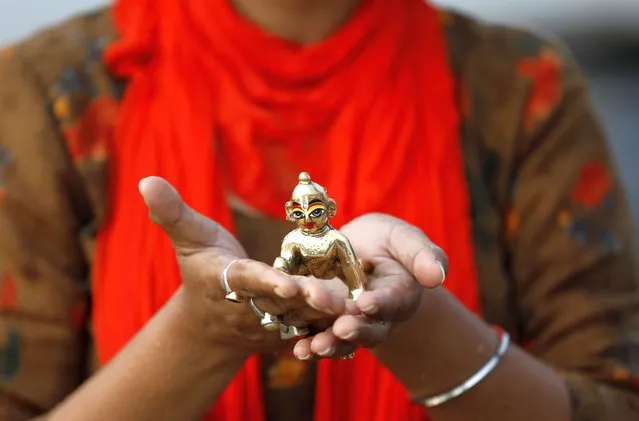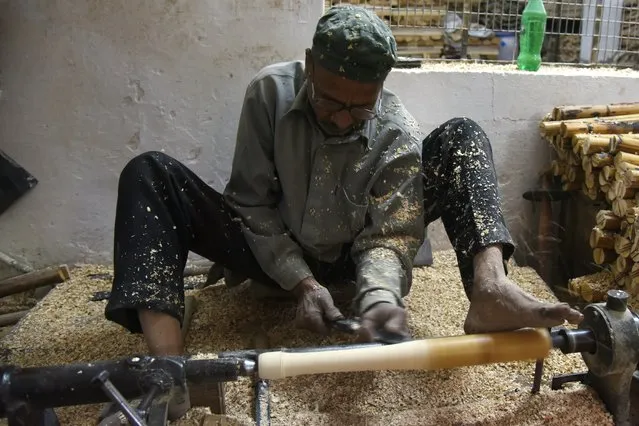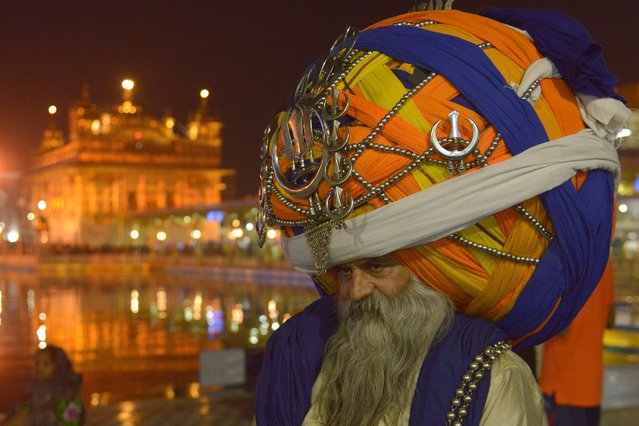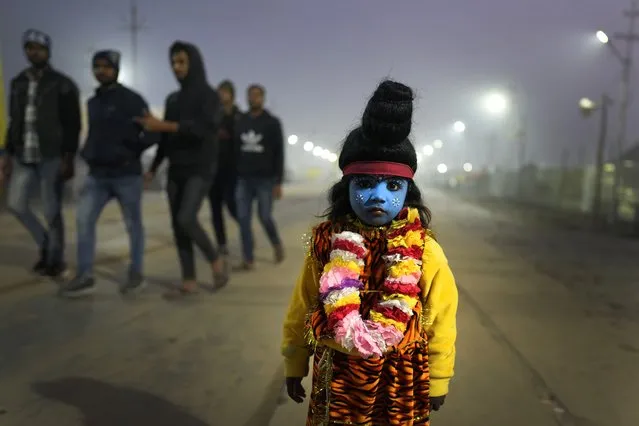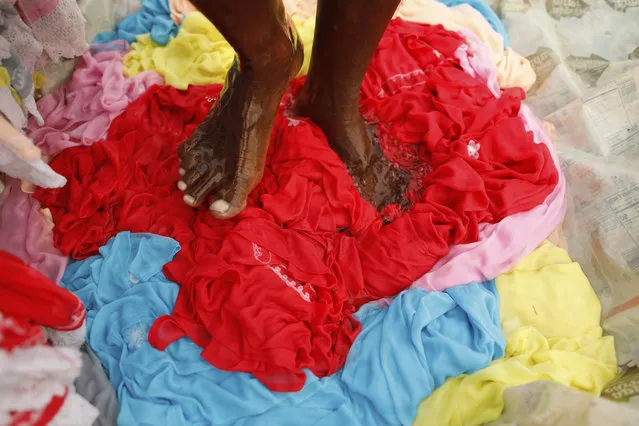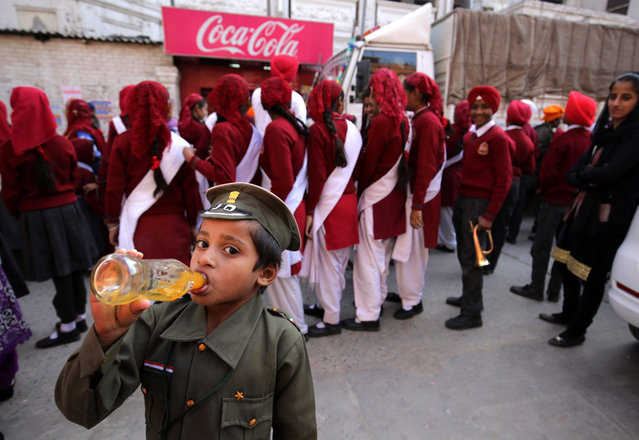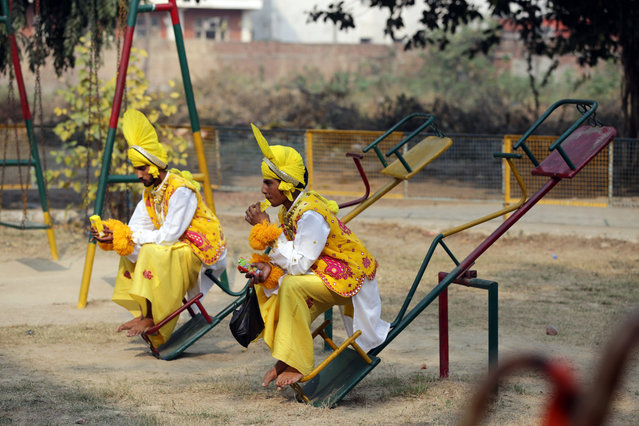
Indian young men wearing traditional folk dance “Bhangra” attire of Punjab, sit on see-saws and sip on soft drinks at a park before their performance during the Khalsa College International Folk Festival 2017 in Amritsar, India, 29 November 2017. The festival is aimed to promote cultural ties between India and participating countries. (Photo by Raminder Pal Singh/EPA/EFE)
11 Dec 2017 08:30:00,post received
0 comments


